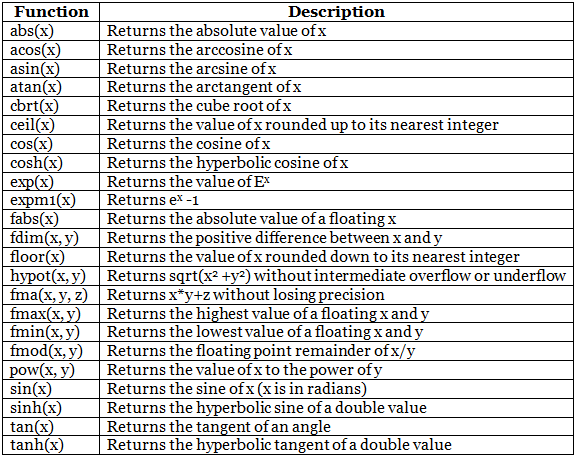C++ Math & Booleans | C++ Programming for Beginners - Class 10 PDF Download
C++ Math
C++ has many functions that allows you to perform mathematical tasks on numbers.
Max and min
The max(x,y) function can be used to find the highest value of x and y:
Example
cout << max(5, 10);
And the min(x,y) function can be used to find the lowest value of x and y:
Example
cout << min(5, 10);
C++ <cmath> Header
Other functions, such as sqrt (square root), round (rounds a number) and log (natural logarithm), can be found in the <cmath> header file:
Example
// Include the cmath library
#include <cmath>
cout << sqrt(64);
cout << round(2.6);
cout << log(2);
Other Math Functions
A list of other popular Math functions (from the <cmath> library) can be found in the table below:

C++ Booleans
Very often, in programming, you will need a data type that can only have one of two values, like:
- YES / NO
- ON / OFF
- TRUE / FALSE
For this, C++ has a bool data type, which can take the values true (1) or false (0).
Boolean Values
A boolean variable is declared with the bool keyword and can only take the values true or false:
Example
bool isCodingFun = true;
bool isFishTasty = false;
cout << isCodingFun; // Outputs 1 (true)
cout << isFishTasty; // Outputs 0 (false)
From the example above, you can read that a true value returns 1, and false returns 0.
However, it is more common to return boolean values from boolean expressions
C++ Boolean Expressions
A Boolean expression is a C++ expression that returns a boolean value: 1 (true) or 0 (false).
You can use a comparison operator, such as the greater than (>) operator to find out if an expression (or a variable) is true:
Example
int x = 10;
int y = 9;
cout << (x > y); // returns 1 (true), because 10 is higher than 9
Or even easier:
Example
cout << (10 > 9); // returns 1 (true), because 10 is higher than 9
In the examples below, we use the equal to (==) operator to evaluate an expression:
Example
int x = 10;
cout << (x == 10); // returns 1 (true), because the value of x is equal to 10
Example
cout << (10 == 15); // returns 0 (false), because 10 is not equal to 15
|
15 videos|20 docs|13 tests
|




















